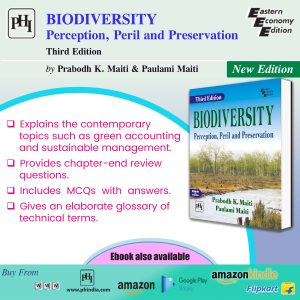Learn about the most ecologically diverse locations globally
Picture this: a tranquil beach, the sun setting on the horizon, and the sound of waves crashing against the shore. It’s moments like these that remind us of the beauty and serenity of nature. Among the most essential aspects of our planet’s natural beauty is its ecological biodiversity.
Biodiversity is the beauty of our planet. Encompassing the incredible variety of species, ecosystems, and genetic diversity present within the earth, the earth’s biodiversity maintains our ecosystem and protects our natural resources.
Some areas stand out as biodiversity hotspots, harboring an exceptional concentration of unique species found nowhere else on the planet. In this blog post, we will delve into the concept of biodiversity hotspots, exploring their significance and highlighting some of the world’s most ecologically rich areas.
Understanding Biodiversity Hotspots:
Biodiversity hotspots are specific regions characterized by high levels of species richness and endemism, meaning they contain a significant number of species found nowhere else. These areas are often geographically small but pack an ecological punch. Biodiversity hotspots are identified based on scientific criteria developed by Conservation International, a leading organization dedicated to the protection of global biodiversity.
Here are the criteria for a specific location to qualify as a biodiversity hotspot:
- Species richness: The area must have a high number of plant species (at least 1,500) as endemism tends to be closely linked to high plant diversity.
- Endemism: A significant proportion of species present in the area must be endemic, meaning they occur naturally only within that specific region.
- Degree of threat: Biodiversity hotspots face exceptional levels of habitat loss, with at least 70% of the original habitat already destroyed or significantly degraded.
Now that we know what criteria guide the identification of biodiversity hotspots, here’s a quick summary of a few biodiversity hotspots globally.
Biodiversity Hotspots Around the World:
The Amazon Rainforest:
As the world’s largest tropical rainforest, the Amazon harbors an astonishing array of species. It is estimated to contain around 40,000 plant species, numerous endemic animals, and indigenous communities whose way of life is deeply intertwined with the forest. However, deforestation, climate change, and unsustainable practices pose significant threats to this invaluable hotspot.
The Coral Triangle:
Located in Southeast Asia, the Coral Triangle is renowned for its exceptional marine biodiversity. Encompassing parts of Indonesia, the Philippines, Malaysia, Papua New Guinea, Timor-Leste, and the Solomon Islands, it is home to over 500 coral species and an astounding array of marine life. Overfishing, pollution, and climate change-induced coral bleaching pose severe risks to this delicate ecosystem.
The Cape Floristic Region:
Situated in South Africa, the Cape Floristic Region is the world’s smallest and most diverse floral hotspot. It boasts over 9,000 plant species, two-thirds of which are found nowhere else on Earth. This region faces threats such as urban expansion, invasive species, and habitat fragmentation, putting its unique flora at risk.
The Sundaland:
Encompassing parts of Malaysia, Indonesia, Brunei, Singapore, and the Philippines, the Sundaland hotspot is a treasure trove of biodiversity. It is home to iconic species such as orangutans, tigers, and elephants, as well as thousands of plant species. Unsustainable logging, conversion of forests for agriculture, and illegal wildlife trade are major concerns within this hotspot.
Importance of Biodiversity Hotspots:
Biodiversity hotspots play a crucial role in maintaining the health and resilience of ecosystems. They provide essential ecological services such as water filtration, carbon sequestration, and pollination, benefiting not only the local communities but also the global population. Moreover, these hotspots serve as living laboratories for scientific research, allowing us to understand evolutionary processes and discover potential breakthroughs in medicine and biotechnology.
Conservation Efforts and the Way Forward:
Given the immense value of biodiversity hotspots, numerous organizations and governments are actively engaged in their conservation. Efforts include:
- Establishing protected areas
- Implementing sustainable land-use practices
- Promoting community-based conservation initiatives
- Raising awareness about the importance of biodiversity
Collaborative efforts involving local communities, scientists, policymakers, and conservationists are key to ensuring the long-term survival of these hotspots.
Biodiversity hotspots are extraordinary regions of our planet, brimming with life and offering a glimpse into the intricate web of nature’s wonders. As protectors of our planet, we should all take the responsibility to conserve these ecologically rich areas.
By safeguarding biodiversity hotspots, we secure the survival of countless species, preserve unique ecosystems, and maintain the delicate balance that sustains life on Earth. Let us celebrate and support the conservation efforts aimed at these remarkable treasures, ensuring their preservation for future generations to cherish.
The new edition of our book on the subject – BIODIVERSITY : PERCEPTION, PERIL AND PRESERVATION, Third Edition written by Prabodh K. Maiti and Paulami Maiti throw light on all aspects of biodiversity as the name suggests. You may go to our website to know about it more or to go through Google Preview if you want to find out about the contents of the book in detail. Here is the link for your convenience https://www.phindia.com/Books/BookDetail/9789391818579/biodiversity-maiti-maiti
